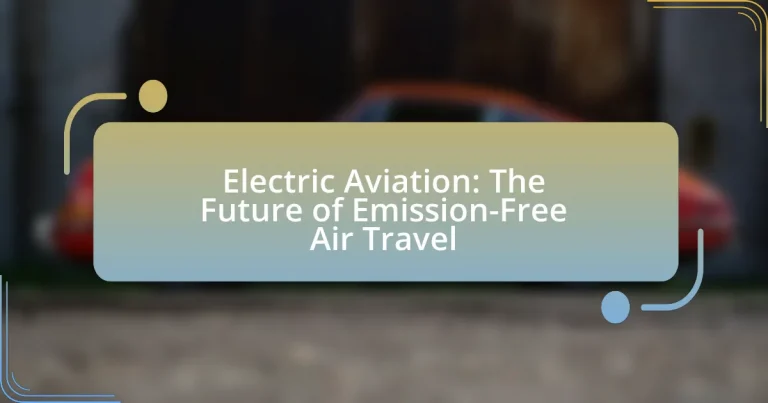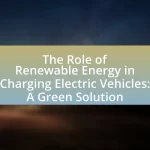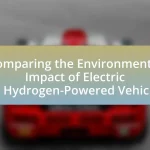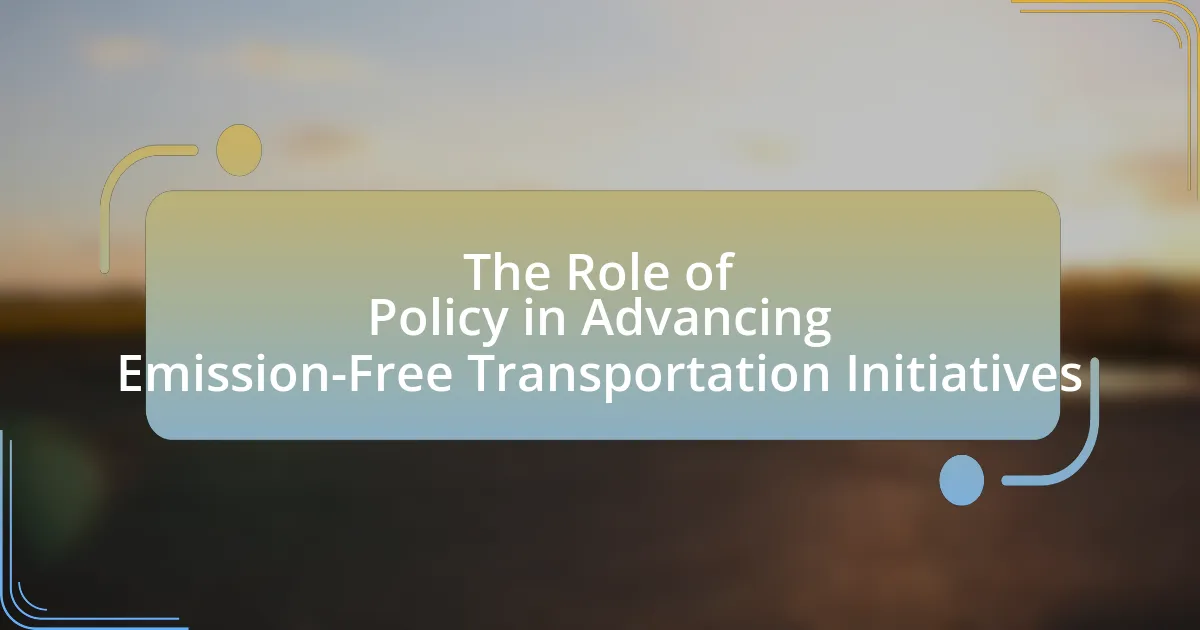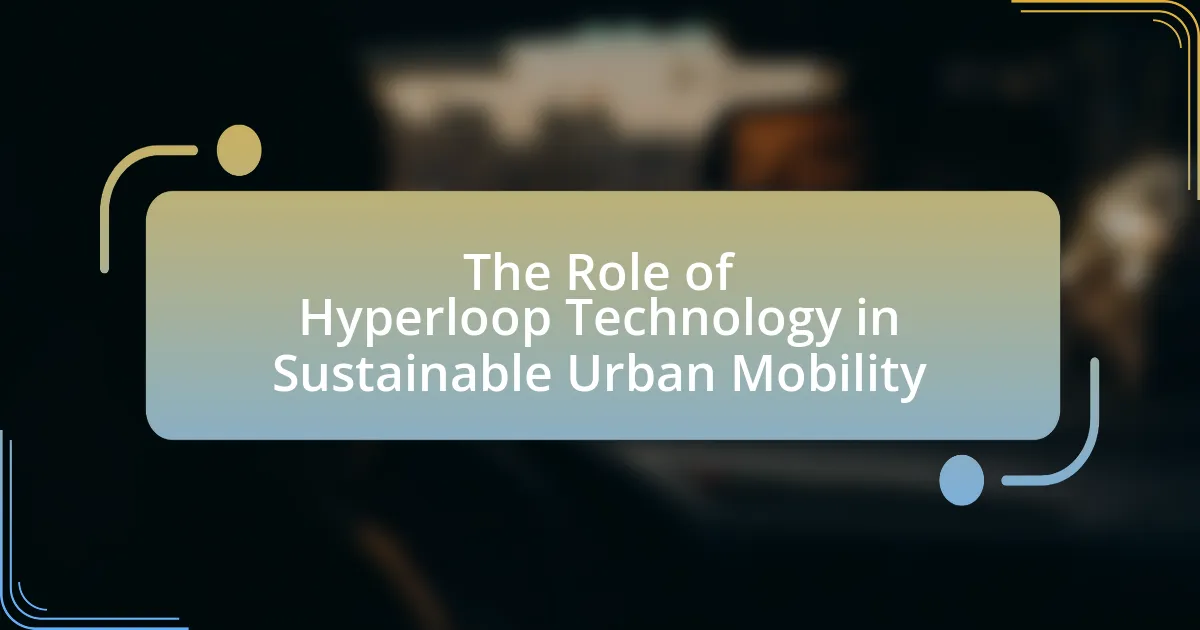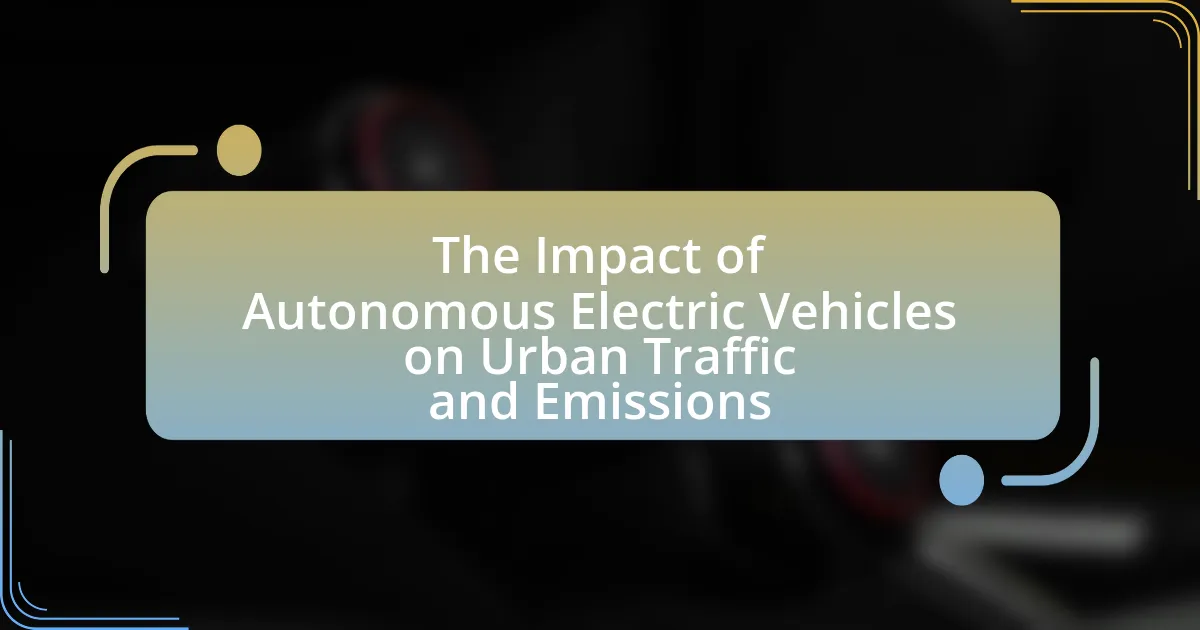Electric aviation represents a transformative shift in air travel, utilizing electric power for aircraft propulsion to significantly reduce reliance on fossil fuels and lower greenhouse gas emissions. This article explores the differences between electric and traditional aviation, the technologies enabling electric flight, and the key components of electric aviation systems. It also examines the importance of electric aviation for sustainable air travel, current advancements, and the various types of electric aircraft in development. Additionally, the article addresses the challenges faced by electric aviation, including battery technology and regulatory hurdles, while highlighting the potential economic impacts and future outlook for this emerging sector.
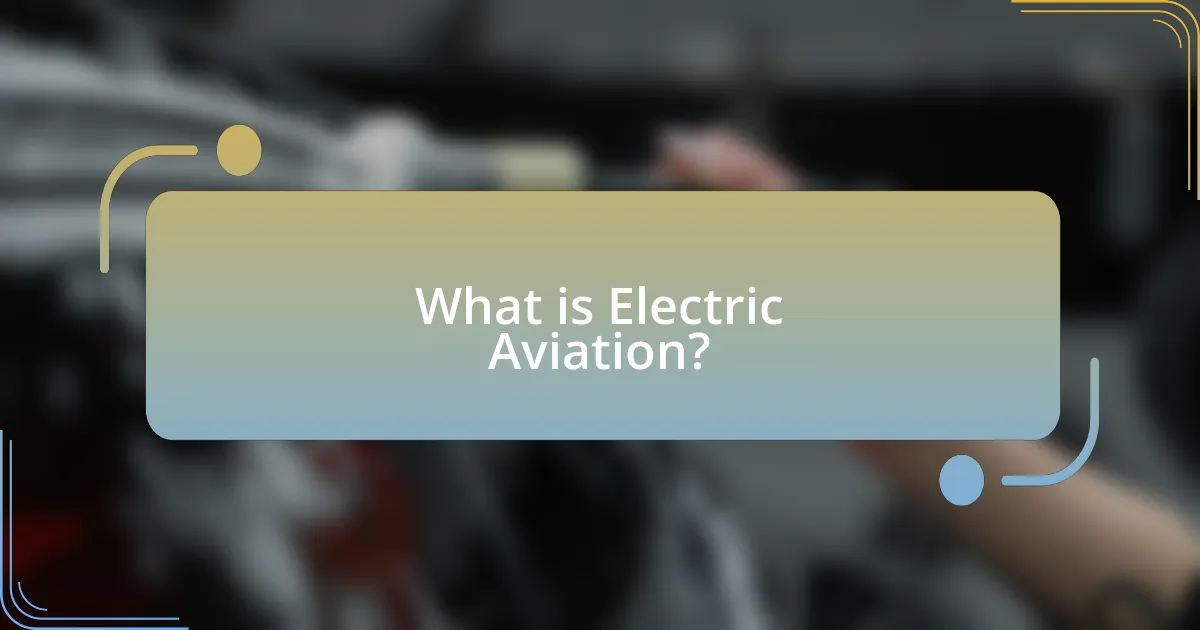
What is Electric Aviation?
Electric aviation refers to the use of electric power for aircraft propulsion, significantly reducing reliance on fossil fuels. This technology encompasses various aircraft types, including small drones and larger commercial planes, utilizing batteries or hybrid systems to achieve flight. The development of electric aviation is driven by the need for sustainable air travel, with advancements in battery technology and electric motors enhancing efficiency and reducing emissions. For instance, the International Air Transport Association (IATA) projects that electric aircraft could reduce carbon emissions by up to 50% compared to traditional jet fuel by 2050.
How does Electric Aviation differ from traditional aviation?
Electric aviation differs from traditional aviation primarily in its propulsion system, utilizing electric motors powered by batteries instead of internal combustion engines fueled by aviation gasoline or jet fuel. This fundamental difference leads to reduced greenhouse gas emissions and lower noise levels, as electric aircraft produce no direct emissions during flight and operate more quietly than their traditional counterparts. For instance, a study by the International Council on Clean Transportation indicates that electric aircraft can reduce carbon emissions by up to 90% compared to conventional aircraft, highlighting the significant environmental benefits of electric aviation.
What technologies enable Electric Aviation?
Electric aviation is enabled by several key technologies, including electric propulsion systems, advanced battery technologies, and energy management systems. Electric propulsion systems, such as electric motors and distributed propulsion architectures, allow for efficient thrust generation with reduced emissions. Advanced battery technologies, particularly lithium-ion and emerging solid-state batteries, provide the necessary energy density and weight efficiency to power aircraft. Energy management systems optimize the use of stored energy, enhancing overall performance and range. These technologies collectively contribute to the feasibility and advancement of electric aviation, aiming to reduce the carbon footprint of air travel significantly.
What are the key components of Electric Aviation systems?
The key components of Electric Aviation systems include electric propulsion systems, energy storage systems, power management systems, and aircraft design adaptations. Electric propulsion systems utilize electric motors powered by batteries or fuel cells to drive the aircraft, significantly reducing emissions compared to traditional combustion engines. Energy storage systems, primarily lithium-ion batteries, store the electrical energy required for flight, with advancements in battery technology enhancing energy density and reducing weight. Power management systems ensure efficient distribution and utilization of electrical power throughout the aircraft, optimizing performance and safety. Finally, aircraft design adaptations, such as lightweight materials and aerodynamic shapes, are crucial for maximizing the efficiency and range of electric aircraft. These components collectively contribute to the development of emission-free air travel, aligning with global sustainability goals.
Why is Electric Aviation important for the future of air travel?
Electric aviation is crucial for the future of air travel because it significantly reduces greenhouse gas emissions and reliance on fossil fuels. The aviation sector is responsible for approximately 2-3% of global carbon emissions, and transitioning to electric aircraft can help mitigate climate change impacts. For instance, electric planes can operate with lower operational costs and reduced noise pollution, enhancing urban air mobility. Furthermore, advancements in battery technology, such as those demonstrated by companies like Ampaire and Pipistrel, show that electric aircraft can achieve viable ranges for short-haul flights, making them a practical alternative to traditional aviation.
How does Electric Aviation contribute to reducing emissions?
Electric aviation contributes to reducing emissions by utilizing electric propulsion systems that produce zero direct emissions during flight. Traditional aircraft rely on fossil fuels, which release significant amounts of carbon dioxide and other greenhouse gases; in contrast, electric aircraft operate on batteries or hybrid systems that minimize or eliminate these emissions. For instance, a study by the International Air Transport Association (IATA) indicates that transitioning to electric aircraft could reduce aviation’s carbon footprint by up to 80% by 2050, highlighting the potential for substantial environmental benefits.
What are the potential economic impacts of Electric Aviation?
Electric aviation has the potential to significantly reduce operational costs for airlines, primarily through lower fuel expenses and maintenance costs associated with electric propulsion systems. According to a study by the International Council on Clean Transportation, electric aircraft can reduce fuel costs by up to 90% compared to traditional jet fuel, which can lead to substantial savings for airlines. Additionally, electric aviation can stimulate job creation in manufacturing, infrastructure development, and maintenance sectors, as new technologies and facilities are needed to support electric aircraft operations. The transition to electric aviation may also enhance regional economic development by improving access to air travel in underserved areas, thereby boosting local economies.

What are the current advancements in Electric Aviation?
Current advancements in electric aviation include the development of more efficient battery technologies, such as solid-state batteries, which offer higher energy density and faster charging times compared to traditional lithium-ion batteries. Companies like Joby Aviation and Archer Aviation are making significant progress with electric vertical takeoff and landing (eVTOL) aircraft, aiming for commercial operations by the mid-2020s. Additionally, major aerospace manufacturers like Boeing and Airbus are investing in hybrid-electric propulsion systems to reduce emissions and improve fuel efficiency. These advancements are supported by increasing regulatory frameworks and government incentives aimed at promoting sustainable aviation technologies.
What types of electric aircraft are currently in development?
Currently, several types of electric aircraft are in development, including electric vertical takeoff and landing (eVTOL) aircraft, electric regional aircraft, and hybrid-electric aircraft. eVTOL aircraft, such as those being developed by companies like Joby Aviation and Archer Aviation, aim to provide urban air mobility solutions. Electric regional aircraft, like the Alice by magniX and the Eviation Aircraft, focus on short-haul flights with zero emissions. Hybrid-electric aircraft, such as the Ampaire Electric EEL, combine traditional engines with electric propulsion to enhance efficiency and reduce emissions. These developments are supported by advancements in battery technology and increasing investments in sustainable aviation.
How do hybrid-electric aircraft function?
Hybrid-electric aircraft function by combining traditional jet engines with electric propulsion systems to optimize fuel efficiency and reduce emissions. The aircraft utilize a conventional engine for high-speed flight and an electric motor powered by batteries for lower-speed operations, such as takeoff and landing. This dual system allows for significant reductions in fuel consumption and greenhouse gas emissions, as evidenced by studies indicating that hybrid-electric configurations can achieve up to 30% lower fuel usage compared to conventional aircraft. The integration of advanced battery technology and electric motors enhances overall performance while contributing to the goal of emission-free air travel.
What are the advantages of fully electric aircraft?
Fully electric aircraft offer significant advantages, including reduced emissions, lower operational costs, and decreased noise pollution. These aircraft produce zero in-flight emissions, contributing to cleaner air and helping combat climate change. Additionally, electric propulsion systems are generally more efficient than traditional jet engines, leading to lower fuel costs and maintenance expenses. For instance, a study by the International Council on Clean Transportation found that electric aircraft could reduce operating costs by up to 50% compared to conventional aircraft. Furthermore, the quieter operation of electric aircraft enhances the quality of life for communities near airports, making them more acceptable for urban air mobility solutions.
What challenges does Electric Aviation face today?
Electric aviation faces significant challenges today, primarily related to battery technology, regulatory hurdles, and infrastructure development. Battery technology currently limits the range and payload capacity of electric aircraft, as most existing batteries do not provide sufficient energy density for long-haul flights. For instance, lithium-ion batteries, which are commonly used, have energy densities around 250 Wh/kg, whereas jet fuel offers approximately 12,000 Wh/kg, highlighting a substantial gap.
Regulatory hurdles also pose a challenge, as aviation authorities must establish new safety standards and certification processes for electric aircraft, which can be time-consuming and complex. Additionally, the development of charging infrastructure at airports is crucial for the widespread adoption of electric aviation, yet many airports lack the necessary facilities to support electric aircraft operations. These challenges collectively hinder the rapid advancement and integration of electric aviation into the existing air travel ecosystem.
How does battery technology impact Electric Aviation?
Battery technology significantly impacts electric aviation by determining the range, efficiency, and overall feasibility of electric aircraft. Advanced battery systems, such as lithium-ion and emerging solid-state batteries, provide the necessary energy density to enable longer flights and reduce weight, which is crucial for aircraft performance. For instance, current lithium-ion batteries offer energy densities around 250 Wh/kg, while solid-state batteries could potentially exceed 500 Wh/kg, allowing for greater flight distances and payload capacities. This advancement in battery technology directly influences the operational capabilities of electric aircraft, making them more competitive with traditional fossil fuel-powered planes.
What regulatory hurdles must be overcome for Electric Aviation?
Electric aviation must overcome several regulatory hurdles, including certification processes, airworthiness standards, and environmental regulations. Certification processes require electric aircraft to meet stringent safety and operational standards set by aviation authorities like the FAA and EASA. Airworthiness standards must be adapted to account for new technologies, such as battery performance and electric propulsion systems, which differ significantly from traditional aircraft. Additionally, environmental regulations will need to address noise pollution and emissions, even though electric aircraft aim to reduce these factors. These hurdles are critical for ensuring that electric aviation can operate safely and efficiently within the existing air traffic management framework.
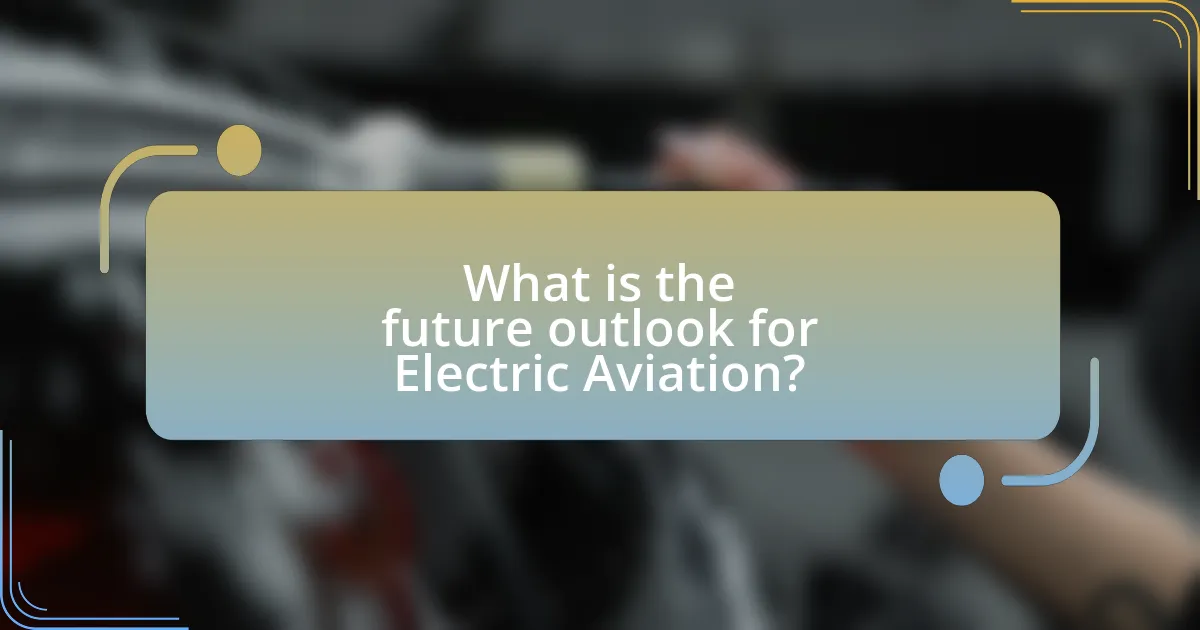
What is the future outlook for Electric Aviation?
The future outlook for electric aviation is promising, with significant advancements expected in technology, infrastructure, and regulatory support. The global electric aviation market is projected to grow substantially, with estimates suggesting a market size of over $26 billion by 2030, driven by increasing demand for sustainable air travel and advancements in battery technology. Companies like Boeing and Airbus are investing heavily in electric aircraft development, while governments are implementing policies to support the transition to greener aviation solutions. Additionally, the rise of urban air mobility and electric vertical takeoff and landing (eVTOL) aircraft is set to revolutionize short-distance travel, further enhancing the viability of electric aviation.
How will Electric Aviation evolve in the next decade?
Electric aviation will evolve significantly in the next decade, driven by advancements in battery technology, regulatory support, and increased investment. The development of high-energy-density batteries is expected to enhance the range and efficiency of electric aircraft, making them more viable for commercial use. For instance, companies like Joby Aviation and Archer Aviation are already working on electric vertical takeoff and landing (eVTOL) aircraft, which are projected to enter service by the mid-2020s. Additionally, governments worldwide are implementing policies to support sustainable aviation, such as the European Union’s Green Deal, which aims to reduce aviation emissions by 55% by 2030. This regulatory environment will likely accelerate the adoption of electric aircraft. Furthermore, the global investment in electric aviation is projected to reach $1.5 billion by 2030, indicating strong market confidence and potential for growth.
What role will government policies play in the growth of Electric Aviation?
Government policies will play a crucial role in the growth of Electric Aviation by providing regulatory frameworks, financial incentives, and infrastructure support. These policies can facilitate research and development, promote the adoption of electric aircraft, and ensure safety standards are met. For instance, the European Union’s Green Deal aims to reduce greenhouse gas emissions, which includes investments in sustainable aviation technologies, thereby directly influencing the growth of electric aviation. Additionally, the U.S. government has allocated funding through initiatives like the Sustainable Aviation Fuel Grand Challenge, which encourages innovation in electric propulsion systems. Such targeted policies are essential for overcoming barriers to entry and accelerating the transition to emission-free air travel.
How might consumer preferences shape the future of Electric Aviation?
Consumer preferences will significantly shape the future of Electric Aviation by driving demand for sustainable travel options. As awareness of climate change increases, consumers are increasingly prioritizing eco-friendly transportation, leading airlines to invest in electric aircraft technology. A survey by McKinsey & Company found that 70% of travelers are willing to pay more for sustainable travel options, indicating a strong market for electric aviation. This shift in consumer behavior will compel manufacturers to innovate and enhance electric aircraft capabilities, ultimately influencing the industry’s growth trajectory.
What are the best practices for adopting Electric Aviation technologies?
The best practices for adopting Electric Aviation technologies include conducting thorough feasibility studies, investing in research and development, and collaborating with industry stakeholders. Feasibility studies assess the economic viability and operational requirements of electric aircraft, ensuring that investments are strategically sound. Investment in research and development is crucial, as it drives innovation and addresses technical challenges such as battery efficiency and aircraft design. Collaboration with manufacturers, regulatory bodies, and research institutions fosters knowledge sharing and accelerates the integration of electric aviation into existing air transport systems. These practices are supported by the growing trend of investment in electric aircraft, with the global electric aviation market projected to reach $27 billion by 2030, indicating a strong shift towards sustainable air travel.
How can airlines prepare for the transition to Electric Aviation?
Airlines can prepare for the transition to Electric Aviation by investing in research and development of electric aircraft technology and establishing partnerships with manufacturers. This proactive approach enables airlines to stay ahead in the evolving aviation landscape. For instance, companies like Airbus and Boeing are already exploring electric propulsion systems, indicating a shift in industry focus. Additionally, airlines should assess their current fleet and operational practices to identify opportunities for integrating electric aircraft, which can lead to reduced operational costs and lower emissions. The International Air Transport Association (IATA) projects that electric aircraft could significantly reduce carbon emissions, reinforcing the necessity for airlines to adapt to this emerging technology.
What strategies can be implemented to enhance the adoption of Electric Aviation?
To enhance the adoption of Electric Aviation, governments and industry stakeholders should implement a combination of regulatory incentives, infrastructure development, and public awareness campaigns. Regulatory incentives, such as tax breaks and subsidies for electric aircraft manufacturers, can lower production costs and encourage innovation. Infrastructure development, including the establishment of charging stations at airports, is essential for supporting electric aircraft operations. Public awareness campaigns can educate consumers and businesses about the benefits of electric aviation, fostering a positive perception and increasing demand. These strategies are supported by the growing trend of sustainability in aviation, with the International Air Transport Association projecting that electric aircraft could significantly reduce carbon emissions in the sector by 2050.
